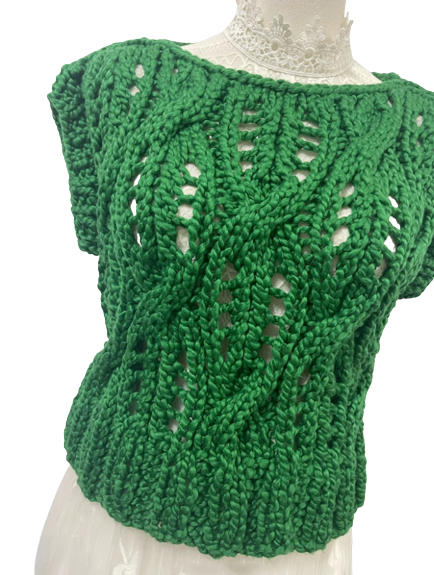Hand knitting is the process of creating a textile by interlocking loops of yarn with knitting needles. It is a traditional craft that has been practiced for centuries and has experienced a resurgence in popularity in recent years. Hand knitting allows for a wide range of creativity and customization, as the knitter can choose the yarn, color, stitch pattern, and garment shape to create a unique finished product. Hand knitting can be used to create a variety of items, from small accessories like hats and scarves to larger garments like sweaters and blankets. It is a relaxing and rewarding hobby that can provide both practical and artistic benefits.


Hand knitting is the process of creating a textile by interlocking loops of yarn with knitting needles. It is a traditional craft that has been practiced for centuries and has experienced a resurgence in popularity in recent years. Hand knitting allows for a wide range of creativity and customization, as the knitter can choose the yarn, color, stitch pattern, and garment shape to create a unique finished product. Hand knitting can be used to create a variety of items, from small accessories like hats and scarves to larger garments like sweaters and blankets. It is a relaxing and rewarding hobby that can provide both practical and artistic benefits.
The hand knitting process involves interlocking loops of yarn with knitting needles to create a textile. First, the knitter chooses their yarn and needles and casts on the required number of stitches. Then, they work through rows of stitches using various knitting techniques to create a pattern or texture. Once the desired length is reached, the knitter binds off the stitches and finishes the edges. The garment can then be blocked to shape it and allow the stitches to settle. The final product is a unique, handmade textile that can be worn or used for decoration.
To design a hand-knitted sweater, a designer should first consider the intended wearer, the desired style, and the appropriate yarn and needle size. They can then sketch out a rough design and create a swatch to test stitch patterns and gauge. Once the swatch is complete, they can calculate the number of stitches and rows needed for the sweater based on the measurements of the wearer. The designer can then create a detailed pattern, including stitch instructions, shaping, and finishing techniques. Finally, they can knit a sample garment to test the pattern and make any necessary adjustments before publishing or selling it.


To design a hand-knitted sweater, a designer should first consider the intended wearer, the desired style, and the appropriate yarn and needle size. They can then sketch out a rough design and create a swatch to test stitch patterns and gauge. Once the swatch is complete, they can calculate the number of stitches and rows needed for the sweater based on the measurements of the wearer. The designer can then create a detailed pattern, including stitch instructions, shaping, and finishing techniques. Finally, they can knit a sample garment to test the pattern and make any necessary adjustments before publishing or selling it.